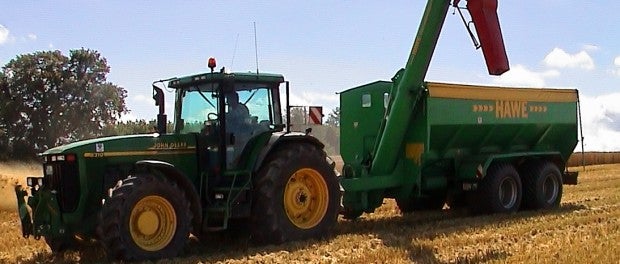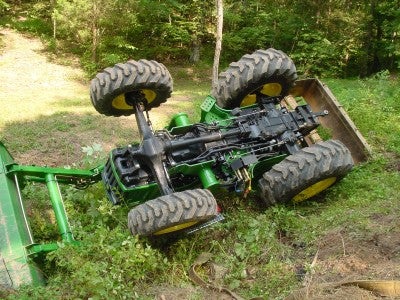Practicing Tractor Safety on the Farm

Safety on the farm is paramount. Regardless of the task you are undertaking, you need to protect yourself at all times. In many cases, beginning or small farms are operations run by just a couple of people, which makes sustained health and well-being necessary for the farm work to get done. When you consider factors such as how many bodies is takes to get work done, and therefore how vital yours is to the success of your farm, protecting yourself must become your number one priority.
One of the many ways injuries can occur on the farm is in and around tractors. Though the tractor is a very useful and valuable machine on the farm, it is also a dangerous one. When used carelessly or improperly, tractors can severely injure or even take lives. This is especially likely in the case of rollover accidents, which are responsible for the bulk of deaths in agricultural work. Though careful operation is vital, so is knowledge of the use and operation of tractors you use. Also important is understanding and using your tractor’s rollover protective structure, or ROPS, if your tractor has one.
In a day and age where vintage tractors are a popular choice for farm use, especially on small and beginning farms due to rising costs of new tractors, it is possible that your tractor may not have a rollover protective structure. If this is the case, you may wish to acquire one. Though it will alter the appearance of your tractor and take away from the vintage quality, it may someday save your life, which is far more important than keeping tractor appearance authentic.
The typical ROPS on a modern tractor consists of a roll cage and/or roll bars. In the event of a rollover these will protect you from being crushed, but only if you are also utilizing the seatbelt. It is the seatbelt that holds you in a location that prevents crush injuries. If a seatbelt is not used, you can actually end up harmed by the ROPS itself in addition to the tractor. On tractors without a ROPS, however, such as vintage tractors, that very same seatbelt could pose a danger in that you may be unable to jump or be thrown clear of a rolling tractor. There is no guarantee you will be thrown free in a case such as this, but a possibility does exist and sometimes a mere possibility is enough. Before deciding on which action to take, consider your options and how confident you feel when operating your tractor. Remember that the speed at which a human being is able to think and act is often no match for how fast accidents can happen.
Ultimately the best measure of protection you can afford yourself is careful operation. If you’re tired, take a break. If the weather is bad, call it a day. Do not take turns at high rates of speed or brake unevenly as this can upset tractor balance; slow and steady not only wins the race but also saves lives, especially when going downhill which should be done in lower gears. Remember that having implements attached will alter your center of gravity for which you must compensate. The same applies to raising and lowering front end loaders. Rear wheels that are stuck and cannot turn does not prevent the axle itself from moving which can result in a tractor flipping over backwards. Obstructions in the field can prevent a danger as well so be alert and aware of your surroundings at all times as last minute evasive maneuvers can prove dangerous as well.
In order to operate a tractor safety, it is important to take advantage of all it has to offer, including the safety mechanism present such as the ROPS. Additionally, taking precautions each time you climb aboard a tractor is going to ultimately be what saves a life. Though it may look easy to just hop on the tractor and go, disaster can strike anyone at any time. By taking care in your tractor operation and protecting yourself in the process, you are less likely to invite danger into your farm work which is what matters most at the end of the day.









 Your Privacy Choices
Your Privacy Choices
Leave a comment